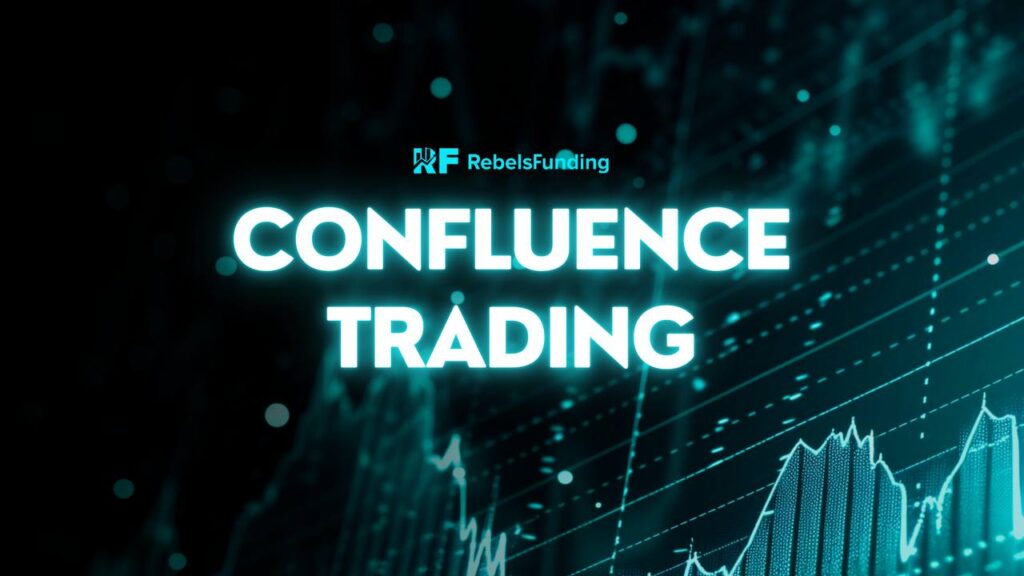What is Confluence Trading & How to Use it to your Advantage

Confluence in trading is the use of two or more different tools/forex indicators to filter and verify each other’s signals.
It provides a comprehensive view of the market and helps you weed out low-probability setups.
Let’s look at its key components, application tips and common mistakes to avoid:
Key components of confluence trading
These are some technical analysis tools or indicators you can use together to determine & confirm a potential direction of a market:
Technical indicators
Moving averages, Bollinger Bands, RSI, ADX, and VWAP can often provide complementary information about a market’s trend, momentum, and volatility.
When these indicators align, it can strengthen the likelihood of a successful trade.
Chart and candlestick patterns
Chart patterns & candlestick formations also serve as powerful tools for discerning potential market trends.
Patterns such as the cup and handle, rounding top, and diamond can offer valuable info into price reversals or continuations.
While the san-ku, tweezer top and bottom, and hook reversal can provide visual cues about potential price changes.
For example, if you identify a head and shoulders pattern on a chart, suggesting a potential bearish reversal.
To strengthen this analysis, you also notice a three crows candlestick pattern forming at the neckline of the head and shoulders.
The convergence of these bearish indicators increases the likelihood that the price will continue to fall.
Here, you may consider going short or closing your existing long position.
Support and resistance levels
The alignment of multiple support and resistance levels like horizontal lines, trendlines, and Fib retracement levels is considered a strong indicator of potential price reversals (or trend continuations).
For example, a powerful confluence point emerges when a Fibonacci extension level intersects with a descending trendline and a horizontal resistance barrier.
And this potentially signals a shift or continuation in the market’s direction.
Higher timeframes analysis
This involves examining price action on (multiple timeframes) larger timeframes like the weekly or monthly charts, to gain a broader perspective and validate signals observed on smaller timeframes such as hourly & daily charts.
This strategy helps in making sure that trades are consistent with the larger market trend, and thereby potentially reducing the occurrence of false signals.
Fundamental analysis
Looking at things like GDP and interest rates can be used with technical analysis to make better decisions.
If you observe that the euro is going up against the U.S. dollar on chart, and at the same time fundamental shows that the European Central Bank is raising interest rates to combat inflation, this combination of factors could signify that the euro is likely to continue appreciating against the dollar.
Time of the day
Different time zones mean that different markets are open at different times in a day, which can lead to varying levels of activity.
Knowing this can help you identify optimal times to trade.
Tips for effective application
1. Find the right mix of signals that consistently provide reliable information.
You should try out different combinations of indicators, chart patterns, and support/resistance levels to spot the most productive approaches for your trading style.
Select tools that align with your trading strategy and risk tolerance.
2. A strong foundation is important for confluence trading. You may want to start by conducting a top-down (higher to lower timeframe) analysis to identify the broader market trend.
Then, establish support and resistance levels and incorporate fundamental analysis to gain a comprehensive understanding of the market environment.
3. Determine specific criteria for entering and exiting trades based on confluence signals.
4. Test your trading system using historical data to assess its performance and identify potential areas for improvement.
Mistakes to avoid when adopting confluence trading strategy
Although confluence can be a great market evaluation method, it is still necessary to be aware of its common drawbacks:
1. Don’t overload your charts with too many indicators/patterns. Keep things simple to maintain clarity. Only focus on the most relevant signals.
2. Remember to always consider the broader market environment (and any significant news events that could affect price movements).
3. Don’t overlook the importance of fundamental factors that can influence market trends.
4. Avoid taking excessive trades based solely on confluence signals. Stick to your trading plan and maintain proper risk management.
If you want to have a detailed picture of the market and increase your speculation accuracy, confluence trading is an effective approach to consider.




